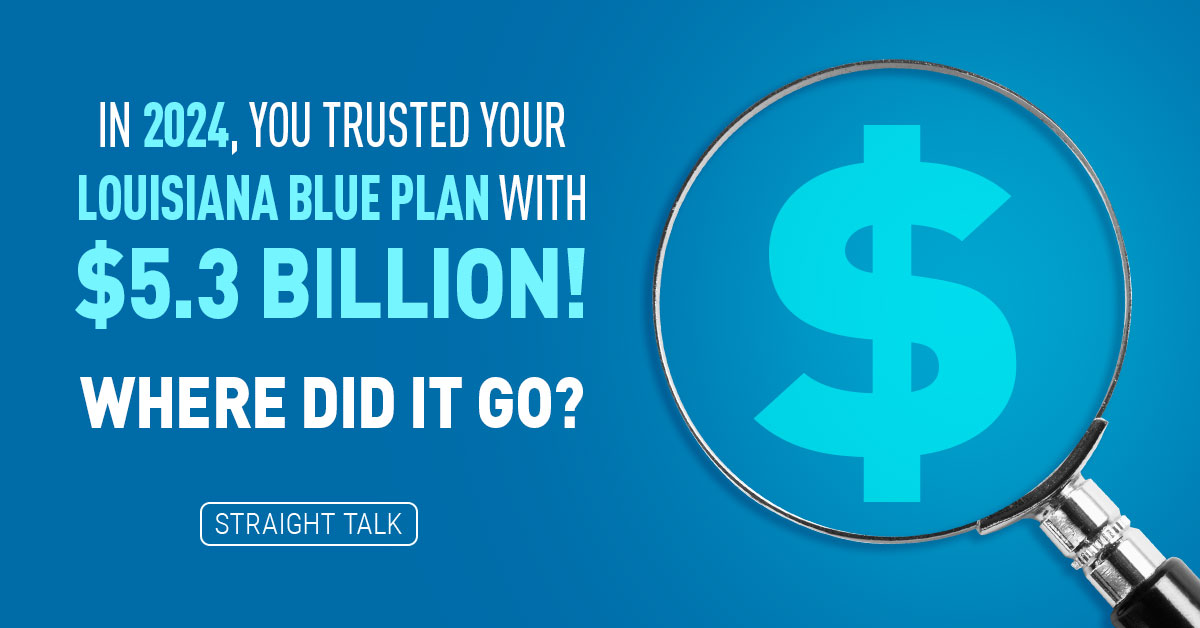One of the more interesting things the Affordable Care Act did to the private health insurance business was to tell health insurance companies that the Feds were now in control of their profit margins. What does that mean?
Imagine you are the CEO of your own health insurance company. In fact, let’s call it Your Own Health Insurance Company, or YOHIC for short! How do you think you would feel if YOHIC collected $1 billion in premiums over a year, but only had to pay out $500 million in healthcare costs? Sounds like YOHIC is doing really well, turning a 50% profit. Does YOHIC get to keep the rest of the premiums for its own payroll and profits?
Since 2010, the answer to that question is a resounding NO!
Premiums and Profits
In 2010, when the Affordable Care Act (ACA) was passed, Congress knew that companies like YOHIC would be getting large amounts of federal money in the form of subsidized premiums (for plans bought through healthcare.gov) and Medicaid premiums (because of the Medicaid expansion). When they thought about that, they wanted to make sure that consumers and taxpayers were protected when they bought health insurance from their company charging them too much.
In the ACA, they created something called a Medical Loss Ratio (MLR) restriction, which is a complicated formula designed to limit companies like YOHIC’s profits to an amount Congress considered reasonable.
This means, for YOHIC, you have to continually track how much of the premiums you collect goes to pay for your customers’ actual healthcare services versus everything else, e.g. employee salaries, office space, taxes and fees, etc. The ACA specifies that over a three-year average, YOHIC has to guarantee that you spent at least 80% of the money coming in on individual and small group (under 50 employees) members’ healthcare costs. For companies with more than 50 employees, you have to guarantee the government that YOHIC spent at least 85% of the money coming in on healthcare costs only.
Since 2010, the federal government is guaranteeing that YOHIC spends a huge percentage of the money health insurance customers pay in premiums on nothing but legitimate healthcare costs.
What does that look like in real life?
Well, let’s imagine that YOHIC collected $1 billion in premiums every year for the past three years, so $3 billion from your customers who are employers with more than 50 employees. YOHIC is now required, under federal law, to show the Centers for Medicare and Medicaid Services (CMS) that at least $2.55 BILLION (85%) of that premium money was spent solely on members’ healthcare costs. That means you have to run YOHIC, pay all your employees for three years, pay your insurance costs, pay your benefit costs, pay your agent/broker commissions, buy or rent any buildings or make improvements, pay your state fees and taxes, pay for advertising, and make any contributions to your rainy day fund using only the 15% that is left over. That’s the law.
So, what happens if YOHIC misses the mark?
The Crystal Ball Isn’t Always Right
The real “secret sauce” of running a health insurance company is prediction. How well can you guess how much money you’re going to need to pay your members’ health claims a year from now? Or two years? Getting that right is key to staying afloat in this business. But, let’s say YOHIC was conservative in estimates of healthcare costs and premiums and didn’t spend as much money on healthcare costs as predicted. Suppose three years down the road, YOHIC finds it is in violation of the 80/85% rule. In other words, YOHIC made too much money.
What happens now is YOHIC enters a federally sanctioned and regulated REBATE process. That’s right, the extra money must be isolated and returned to your members. Send them a check.
Sometimes, the members are part of an employer plan. The law says the employer gets the check and has to spend it on employees’ healthcare costs.
Sometimes, the members are part of an individual plan. The law says YOHIC, as an insurance carrier, has to divvy it up and send each policyholder a check. Right away.
Paying Back the Difference
So, Mike, does this rebate stuff actually ever happen?
More often than you might think. In fact, here at Blue Cross and Blue Shield of Louisiana, we’re actually doing this now. Medical expenses in our individual market pool for the past three years were lower than we projected, and our three-year average showed that we didn’t spend quite enough on healthcare costs. Now, to be fair, we’re talking about projecting hundreds of millions of dollars to be spent over three years, and we missed our estimate by about $1.6 million. But, that means almost 20,000 of our policyholders are getting checks as you are reading this because we are sending that excess premium back to them. Checks are in the mail. Because that’s what the law says. It’s not our money.
So, the next time you hear politicians moaning and complaining about health insurance companies “being greedy and making unlimited profits,” you might want to remind them that their information is 10 years out of date. Profit margins at health insurance companies are tightly regulated and controlled by the Feds via CMS, and you can rest assured that your Louisiana Blue plan is 100% in compliance with the ACA restrictions on profits and ready to send the money back to you when we miss the target.
Straight Talk is, when we miss our estimates and charge you too much, based on the federal law, you get a check back from us in the mail. That’s why 19,000 of your friends and neighbors are getting one right now.





Does this apply to group insurance policy ?
When a carrier mis-estimates claims in such a way that rebates are triggered, it doesn’t matter if it is an individual risk pool, or a group insurance risk pool. For the individual and small group pools in Louisiana, the carrier has to prove to the IRS that at least 80% of all premiums paid in were paid on DIRECT MEDICAL EXPENSES over a three year period. If the company is part of the large group risk pool (companies with more than 50 employees) and letting the insurance company carry the risk for their employees (not self-funded, or paying their own claims) then the carrier has to certify they spent 85% of the money on medical expenses or rebates are triggered. If the carrier spent less than that, his gross margin would be too high and he would have to return that money either directly to the individual, or to the company that owns the insurance of which the individual employees are a member.
People with individual coverage in such a risk pool get a check.
Companies/Employers get the option to credit to their premium or return the money to their employees in other ways.
In this instance here at BCBSLA, it was an individual risk pool with 19,000 members that didn’t get their full 80% spent on healthcare, so they are sharing $1.6 million in rebates, as per IRS rules.
thanks..mrb
the profit of medicines and all kinds of medical supplies is very big, the nail they put on you with a broken leg costs $ 20 and they want $ 200